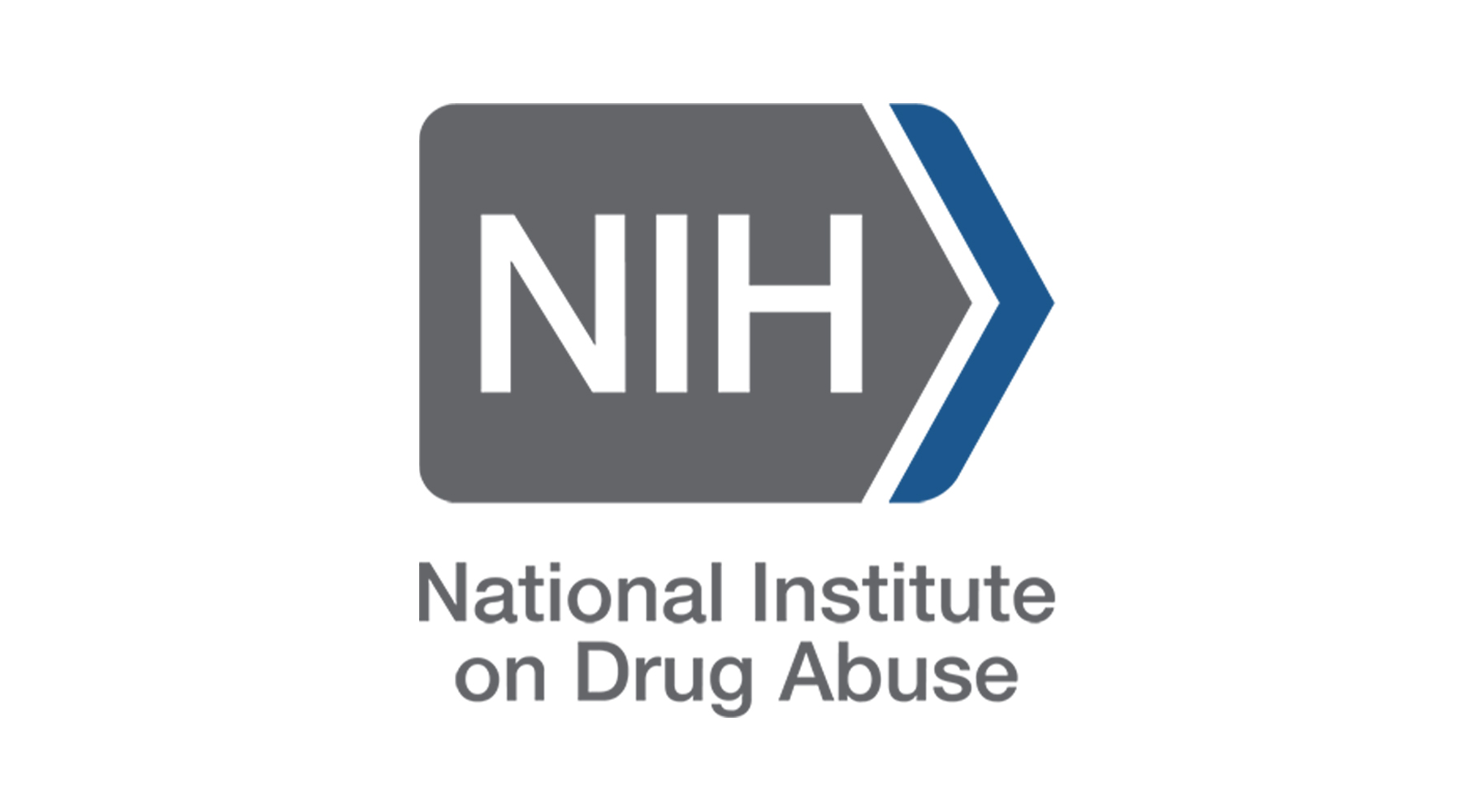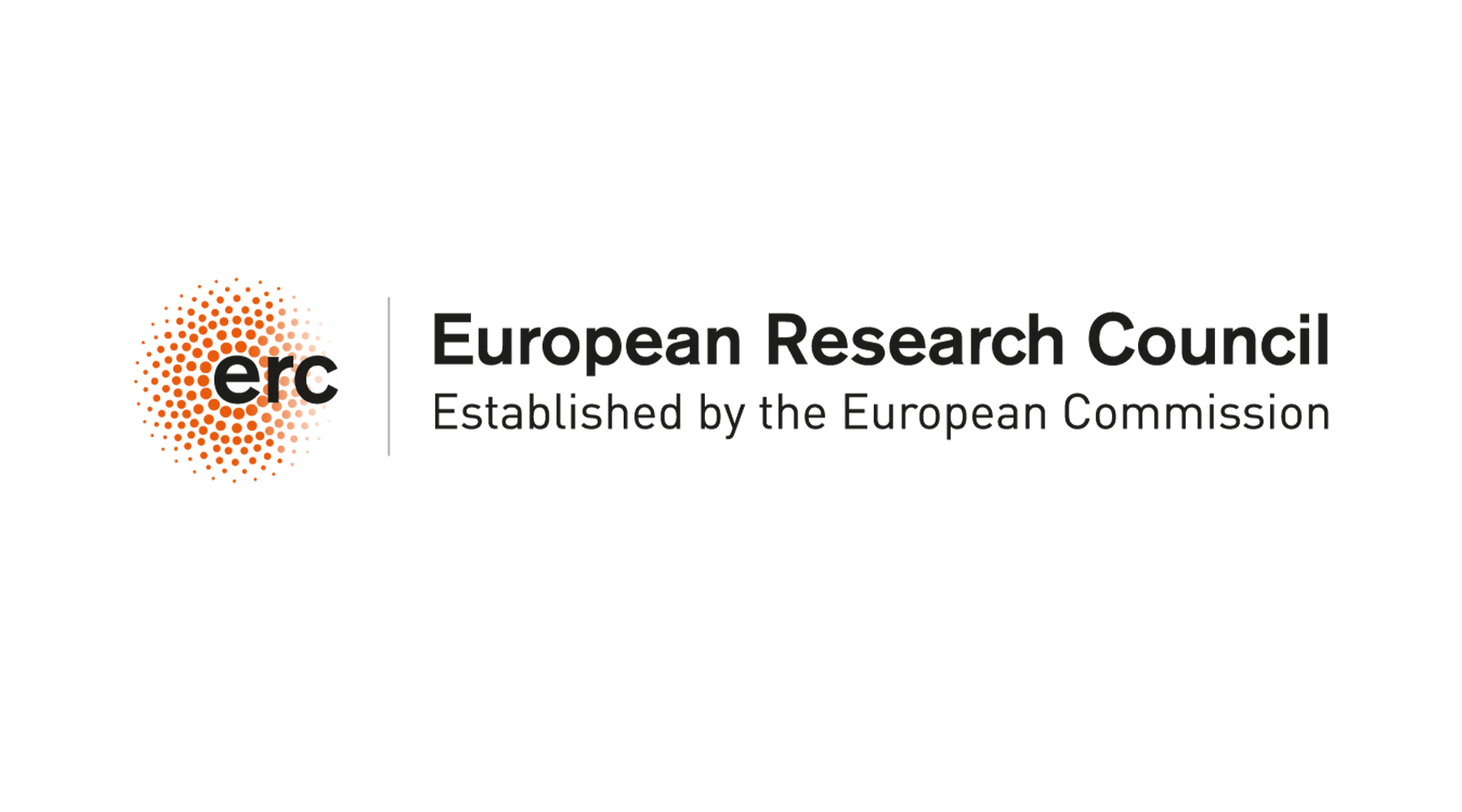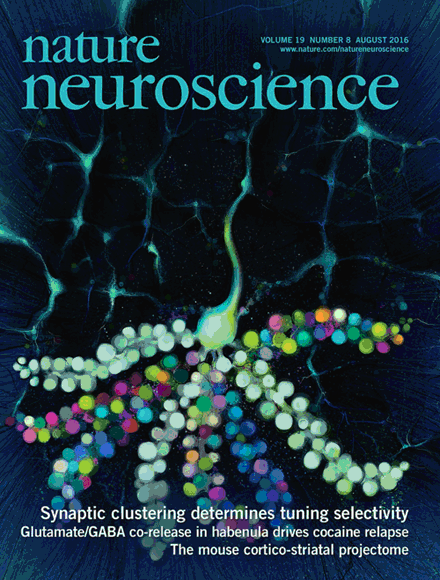Research
Our research focuses on identifying the epigenetic basis of neurodegenerative and psychiatric disorders. We study how miRNAs and histone modifying enzymes contribute to the establishment and maintenance of neuronal identity and specialized functions. We are particularly interested in understanding the epigenetic mechanisms of cellular plasticity and its role in regulation of microglia-neuron communication. One of the major focuses of our research lies in the development of animal models of human neurological disease associated with abnormal function of epigenetic regulators of different types. Using pioneering technologies including cell type specific analysis of mRNAs, miRNAs and chromatin modifications in neurons in vivo, our research aims at understanding the mechanism of neurological disorders and at their potential treatment by targeting the neuronal epigenome.

Publications
2021
2020
Badimon A, Strasburger H, Ayata P, Chen X, Nair A, Ikegami A, Hwang P, Chan A, Graves S, Uweru J, Ledderose C, Kutlu M, Wheeler M, Kahan A, Ishikawa M, Wang Y, Loh Y, Jiang J, Surmeier DJ, Robson S, Junger W, Sebra R, Calipari E, Kenny P, Eyo U, Colonna M, Quintana F, Wake H, Gradinaru V, Schaefer A.
Negative feedback control of neuronal activity by microglia.
Nature, 2020 Oct;586(7829):417-423. doi: 10.1038/s41586-020-2777-8. Epub 2020 Sep 30. PMID: 32999463
Wang L, Sinnott-Armstrong N, Wagschal A, Wark AR, Camporez JP, Perry RJ, Ji F, Sohn Y, Oh J, Wu S, Chery J, Moud BN, Saadat A, Dankel SN, Mellgren G, Tallapragada DSP, Strobel SM, Lee MJ, Tewhey R, Sabeti PC, Schaefer A, Petri A, Kauppinen S, Chung RT, Soukas A, Avruch J, Fried SK, Hauner H, Sadreyev RI, Shulman GI, Claussnitzer M, Näär AM.
A microRNA linking human positive selection and metabolic disorders.
Cell, 2020 Oct 29;183(3):684-701.e14. doi: 10.1016/j.cell.2020.09.017. Epub 2020 Oct 14. PMID: 33058756
Chottekalapanda RU, Kalik S, Gresack J, Ayala A, Gao M, Wang W, Meller S, Aly A, Schaefer A, Greengard P.
AP-1 controls the p11-dependent antidepressant response.
Mol Psychiatry. 2020 Jul;25(7):1364-1381. doi: 10.1038/s41380-020-0767-8. Epub 2020 May 21. PMID: 32439846
Ayata P, Schaefer A.
Innate sensing of mechanical properties of brain tissue by microglia.
Curr Opin Immunol. Review. 2020 Feb 10;62:123-130. doi: 10.1016/j.coi.2020.01.003.
PMID: 2058296
2019
1.) Kana V, Desland FA, Casanova-Acebes M, Ayata P, Badimon A, Nabel E, Yamamuro K, Sneeboer M, Tan IL, Flanigan ME, Rose SA, Chang C, Leader A, Le Bourhis H, Sweet ES, Tung N, Wroblewska A, Lavin Y, See P, Baccarini A, Ginhoux F, Chitu V, Stanley ER, Russo SJ, Yue Z, Brown BD, Joyner AL, De Witte LD, Morishita H, Schaefer A, Merad M.
CSF-1 controls cerebellar microglia and is required for motor function and social interaction.
J Exp Med. 2019 Jul 26. PMID: 31350310
2.) Gunner G, Cheadle L, Johnson K, Ayata P, Badimon A, Mondo E, Nagy A, Liu L, Bemiller S, Kim K, Lira SA, Lamb BT, Tapper AR, Ransohoff RM, Greenberg ME, Schaefer A, Schafer DP.
Sensory lesioning induces microglia-mediated elimination of thalamocortical synapses via neuronal ADAM10 and fractalkine signaling.
Nature Neuroscience, 2019 Jul;22(7):1075-1088. PMID: 31209379
3.) Sullivan JM, De Rubeis S and Schaefer A.
Convergence of Spectrums: Neuronal gene network states in Autism spectrum disorder
Curr Opin Neurobiol. Review, 2019 Jun 17;59:102-111. PMID: 31220745
2018
Epigenetic regulation of brain region-specific microglia clearance activity.
Ayata P, Badimon A, Strasburger HJ, Duff MK, Montgomery SE, Loh YE, Ebert A, Pimenova AA, Ramirez BR, Chan AT, Sullivan JM, Purushothaman I, Scarpa JR, Goate AM, Busslinger M, Shen L, Losic B, Schaefer A.
Nat Neurosci. 2018 Jul 23. doi: 10.1038/s41593-018-0192-3. [Epub ahead of print]
PMID: 30038282
Featured as news and views at Nature neuroscience: https://www.nature.com/articles/s41593-018-0196-z
2017
Jiang Y, Loh YE, Rajarajan P, Hirayama T, Liao W, Kassim BS, Javidfar B, Hartley BJ, Kleofas L, Park RB, Labonte B, Ho SM, Chandrasekaran S, Do C, Ramirez BR, Peter CJ, C W JT, Safaie BM, Morishita H, Roussos P, Nestler EJ, Schaefer A, Tycko B, Brennand KJ, Yagi T, Shen L, Akbarian S.
The methyltransferase SETDB1 regulates a large neuron-specific topological chromatin domain.
Nature Genetics. 2017 Aug;49(8):1239-1250. doi: 10.1038/ng.3906. Epub 2017 Jul 3. PMID:28671686
2016
von Schimmelmann M, Feinberg PA, Sullivan JM, Ku SM, Badimon A, Duff MK, Wang Z, Lachmann A, Dewell S, Ma’ayan A, Han MH, Tarakhovsky A, Schaefer A. Polycomb repressive complex 2 (PRC2) silences genes responsible for neurodegeneration. Nat Neurosci. 2016 Oct;19(10):1321-30. doi: 10.1038/nn.4360.PMID:275262
Hansen T, Venø M, Jensen T, Schaefer A, Damgaard K, and Kjems J. Argonaute-associated short introns are a novel class of gene regulators. Nature Communication. 2016 May 13;7:11538. doi: 10.1038/ncomms11538. PMID: 27173734
2015
Sullivan J, Badimon A, Schaefer U, Ayata P, Gray J, Chung C, von Schimmelmann M, Zhang F, Garton N, Smithers N, Lewis H, Tarakhovsky A, Prinjha R, Schaefer A. Autism-like syndrome is induced by pharmacological suppression of BET proteins in young mice. J Exp Med. 2015 Oct 19;212(11):1771-81. doi: 10.1084/jem.20151271. Epub 2015 Sep 21.
2014
Gao Z, Lee P, Stafford J.M, von Schimmelmann M, Schaefer A, Reinberg D. AUTS2 (Autism Susceptibility Candidate 2) confers transcriptional activation to PRC1 in the CNS. Nature. 2014 Dec 18;516(7531):349-54. doi: 10.1038/nature13921. PMID: 25519132
Lyons DB, Magklara A, Goh T, Sampath SC, Schaefer A, Schotta G, Lomvardas S. Heterochromatin-mediated gene silencing facilitates the diversification of olfactory neurons. Cell Rep. 2014 Nov 6;9(3):884-92. doi: 10.1016/j.celrep.2014.10.001. Epub 2014 Oct 30. PMID: 25437545
Maze I, Chaudhury D, Dietz DM, Von Schimmelmann M, Kennedy PJ, Lobo MK, Sillivan SE, Miller ML, Bagot RC, Sun H, Turecki G, Neve RL, Hurd YL, Shen L, Han MH, Schaefer A*, Nestler EJ*. *co-corresponding authors. G9a influences neuronal subtype specification in striatum. Nature Neuroscience. 2014 March. doi: 10.1038/ nn.3670. PMID: 24584053
2013
Tan CL, Plotkin JL, Venø MT, von Schimmelmann M, Feinberg P, Mann S, Handler A, Kjems J, Surmeier DJ, O’Carroll D, Greengard P, Schaefer A. MicroRNA-128 governs neuronal excitability and motor behavior in mice. Science. 2013 December; 342 (6163):1254-8. PMID: 24311694
2012
O’Carroll, D. and Schaefer A. General principals of miRNA biogenesis and regulation in the brain. Neuropsychopharmacology Review, 2012 Jun 6. doi: 10.1038/npp.2012.87. PMID: 2431169
2011
Schaefer A, Tarakhovsky A., and Greengard P. Epigenetic mechanisms of mental retardation. Prog Drug Res. 2011; 67:125-46. Review. Epigenetics and Disease, Springer, Basel. PMID: 21141728
Meet the Team

Pinar Ayata
Adjunct Assistant Professor
Received NARSAD Young Investigator Award in July/August 2016.
Received Robin Chemers Neustein Postdoctoral Fellowship Award in 2019.







Vinaya Sahasrabuddhe
Postdoctoral Fellow
vinaya.sahasrabuddhe@mssm.edu


Alumni
Sahil Agrawal
Miriam Akeju
Ana Badimon
Mary Duff
Philip Feinberg
Naomi Goodman
Silas Mann
Brianna Ramirez
Brian Safaie
Zachary Schulman
Josefa Sullivan
Sarah Veugelen
Naama Volk
Fan Zhang
Melanie von Schimmelmann
Funding & Awards
Anne Schaefer has been named a 2014 Kavli Frontiers of Science Fellow by the National Academy of Sciences (NAS). The Kavli program honors young scientists who are considered leaders in their fields and have made significant contributions to science. Jointly sponsored by the US National Academy of Sciences and The Kavli Foundation, the Kavli Frontiers of Science bring together some of the very best young scientists (under age 45) to discuss exciting advances and opportunities in their fields in a format that encourages informal collective, as well as one-on-one discussions among participants. Dr. Schaefer was invited to the Japanese-American Frontiers of Science ( JAFoS) Symposium that took place in Tokio in December 2014.
Awards
| 1999-2003 | Scholarship of the German National Merit Foundation |
| 2001-2003 | USA-Scholarship of the German National Merit Foundation |
| 2003 | Keystone Scholar Travel Award |
| 2004 | Summa cum laude, Charité University Berlin |
| 2005 | Hans-Hench Award 2005, German Society for Immunology, Germany |
| 2006-2008 | German Research Foundation DFG, Research Fellowship, Germany |
| 2011 | 2010 NARSAD Young Investigator Award, USA |
| 2012 | named “Chrissy Rossi Investigator” |
| 2012 | Seaver Autism Center Research Award, USA |
| 2012 | NIH Director’s New Innovator Award, USA |
| 2014 | Technology Development Fund Award, Mount Sinai Innovation, USA |
| 2014 | Cure Challenge Award, USA |
| 2014 | Kavli Frontiers in Science Fellow, The National Academy of Science, USA |
| 2015 | Harold and Golden Lamport Research Award, Mount Sinai, USA |
| 2017 | Co-director, Center for Glial Biology, Mount Sinai School of Medicine, USA |
| 2018 | Inaugural NINDS Landis Award for Outstanding Mentorship, NIH, USA |
| 2018 | Inventor of the Year 2018 Award, Mount Sinai, USA |
| 2019 | Vice Chair of Neuroscience, Mount Sinai, USA |
| 2019 | Max Planck Sabbatical Award |
Funding
| On Going | ||
| 09/18/2017-09/17/2019 |
R21 MH115353-01 (Schafer and Schaefer, PIs) NIMH |
|
| 12/01/2014-04/01/2019 |
GSK COL1000039850 (Schaefer, PI) GSK Research Collaboration Agreement |
|
| 10/01/2017-09/30/2019 |
Pfizer COL (Schaefer, PI) Pfizer Inc., U.S. Pharmaceuticals Group |
|
| 03/01/2017-08/28/2022 |
M.D. Anderson (Goate, PI,) Understanding the mechanism of MS4A-dependent AD risk |
|
| 08/01/2016—07/31/2021 |
RF1 AG054011-01 (Goate, PI, Schaefer, Co-PI) NIA |
|
| 09/01/2015—08/31/2019 | R01 NS091574-01A1 (Schaefer, PI) NINDS “Control of neuron activity and animal behavior by non-coding RNAs” This award addresses the mechanism and potential therapeutic effects of miR-128 control of epilepsy in mice. |
|
| 12/01/2014—11/30/2016 | GSK COL1000039850 (Schaefer) GSK Research Collaboration Agreement “Role of BRD proteins in microglia activation” The aim of the proposed project is to test the ability of the brain permeable I-BET to suppress microglia activation and microglia mediated neurodegeneration. |
|
| 09/31/2012—09/30/2017 | 1 DP2 MH100012-01 (Schaefer) 2012 NIH Director’s New Innovator Award “Cognate microglia-neuron interaction and its role in inflammation” This award addresses the molecular basis for cognate neuron-microglia interaction and its role in controlling neuronal function in health and disease. |
|
| 09/01/2014—08/31/2017 | CURE “Non-coding RNA mediated control of inhibitory and excitatory neuron excitability.” This award addresses the role of miR-128 in modulating excitatory and inhibitory neuron excitability and associated behavior in mouse models of Dravet syndrome in vivo. |
|
| Completed | ||
| 03/01/2014—02/28/2015 | 5P30DA035756-02 (Heintz), P30 Pilot Grant (Schaefer) NIDA, Molecular Definition of Brain Circuits Controlling Addiction “Analysis of cocaine induced transcriptional memory at a single cell level” |
|
| 01/01/2012—12/31/2014 | Seaver Autism Center Research Award (Schaefer) Seaver Foundation “Epigenetic basis of Autism” |
|
| 01/01/2014—12/31/2014 | Technology Development Award 2014 (Schaefer) Mount Sinai Innovation “Novel miRNA-based treatment of severe Epilepsy.” |
|
| 07/15/2011—07/14/2013 | 2010 Young Investigator Award, Grant# 18194 (Schaefer) NARSAD, The Brain and Behavioral Research Fund “Epigenetic regulation of depression” |
|
| 01/09/2008—08/31/2010 | 1RO3DA025962 (Schaefer) NIDA “The role of miRNAs in Cocaine Addiction” |
|
| 12/22/2008—12/21/2011 | W81XWH-09-1-0095 (Schaefer) U. S. Army Medical Research and Materiel Command (USAMRMC) “Role of miRNAs inParkinson’s Disease” |
|
| Current | ||
| 01/01/2019-10/31/2023 | R01MH118329 (Schaefer, PI) NIH NIMH Microglia mediated suppression of dopamine induced neuronal responses and behavior The goal of this study if to focus on the identification of a novel microglia-neuron “circuit” in the basal ganglia that plays a critical role in modulating dopamine-controlled behaviors |
|
| 02/15/2019-11/03/2023 | DA047233 (Nestler, Schaefer PI) NIH NIDA Transcriptional Mechanisms of Drug Addiction/ Project 3 This goal of this grant is to address the contribution of microglia to dopamine signaling and addiction in mice. Role: PI of Project 3 |
|
| 04/01/2018-03/31/2023 | U01AG058635 (Goate) NIH NIA Genomic approach to identification of microglial networks involved in Alzheimer’s disease risk The goal of this study is to use integrative genomic approaches to identify AD risk loci in microglial networks and to model the effects of a disease risk mutation in human induced pluripotent stem cells and a mouse model. Role: Co-PI |
|
| 08/01/2016-07/31/2021 | RF1 AG054011 (Goate PI, Schaefer Co-PI) NIH NIA Understanding the mechanism of SPl1 dependent Alzheimer disease risk. This award addresses the mechanism of the Alzheimer disease risk gene SPI1 in control of microglia activation in vivo. Role: Co-PI |
|
| 09/01/2015-08/31/2020 NCE | R01 NS091574 (Schaefer, PI) NIH NINDS Control of neuron activity and animal behavior by non-coding RNAs. This award addresses the mechanism and potential therapeutic effects of miR-128 control of epilepsy in mice. |
|
| 05/03/2018-05/02/2020 | Regenxbio (Schaefer, PI) Collaborative Agreement miR-128 based treatment of epilepsy This award supports the generation and novel AAV miR-128 overexpression strategies for the treatment of epilepsy. |
|
| 03/02/2017-03/01/2021 | GlaxoSmithKline (Schaefer, PI) GlaxoSmithKline Using brain permeable I-BET to suppress microglia activation and microglia mediated neurodegeneration. The goal of this proposal is to elucidate the therapeutic potential of I-BET for the suppression of microglia activation and the treatment of neurodegenerative diseases. |
|
| 03/01/2019-02/28/2021 | CHDI (Schaefer, PI) Research Agreement The role of PRC2 mediated gene regulation in Huntington’s disease The goal of this agreement is to address the potential role of PRC2 –mediated H3K27me3 for the development of Huntington’s disease in mice. |
|
| 08/07/2017-08/06/2022 | M.D. Anderson (Goate PI, Schaefer, Co-I) M.D. Anderson Understanding the mechanism of MS4A-dependent AD risk. The goal of this research is to investigate the role of MS4A in microglia and its contribution to the development of AD. |
|
| 07/01/2017-08/31/2020 | A2017458S (Marcora) BrightFocus Foundation Understanding the role of apolipoprotein E in microglia. The goal of this research is to investigate the role of ApoE in microglia in vitro and in vivo using iPSC-derived microglial cells and mice genetically engineered to lack ApoE in microglial cells. Role: Co-Investigator |
|
| 05/01/2012-02/28/2022 | MH096890 (Nestler) NIH NIMH Epigenetic Mechanisms of Depression The major goal of this multi-project grant is to explore the role of epigenetic mechanisms in controlling life-long risk for depression and other stress-related disorders across the life cycle. The major components of this Center grant are: Animal Models Core (PI, Vanna Zachariou), Chromatin and Gene Analysis Core (PI, Li Shen) Project 1: Repressive Histone and DNA Methylation in Rodent Depression (Dr. Nestler is Project PI) Project 2: Project 2. Methyl-Binding Proteins in Rodent Depression Models (PI, Schahram Akbarian) Project 3: Histone Variants in Rodent Depression Models (PI, David Allis) Project 4: Epigenetic Mechanisms of Depression in Human Limbic Circuits (PI, Carol Tamminga) |
|
| Past | ||
| 09/30/2012-09/29/2017 | 1 DP2 MH100012-01 (Schaefer, PI) 2012 NIH Director’s New Innovator Award “Cognate microglia-neuron interaction and its role in inflammation” This award addresses the molecular basis for cognate neuron-microglia interaction and its role in controlling neuronal function in health and disease. |
|
| 10/15/2017-10/14/2019 | Pfizer Inc. (Schaefer, PI) Pfizer Inc. Pharmaceuticals Group miR-128 Based Treatment of Fatal Epilepsy in Dravet-like Syndrome. This award supports the generation and testing of novel miR-128 overexpression strategies for the treatment of Dravet Syndrome. |
|
| 06/01/2018-05/31/2019 | Lilly Research Award Program (Schaefer, PI) Collaborative agreement Microglia based mechanisms of neuroexcitability. The goal of this research is to identify microglia produced ligands that reduce cortical neuron excitability in an in vitro assay. R21 MH115353 (Schafer, Schaefer, PI) |
|
| 09/18/2017-08/31/2019 | NIH NIMH UMass Exploring Novel Activity-Dependent Mechanisms Regulating Microglia-Synapse Interactions. This award aims to elucidate novel molecules/mechanisms mediating neuronal activity dependent synapse remodeling by microglia. |
|
| 09/01/2014-08/31/2017 | CURE Challenge Award (Schaefer, PI) CURE ”Non-coding RNA mediated control of inhibitory and excitatory neuron excitability.” This award addresses the role of miR-128 in modulating excitatory and inhibitory neuron excitability and associated behavior in mouse models of Dravet syndrome in vivo. |
|
| 02/25/2016-02/24/2018 | F-Prime Capital (Goate, Schaefer, PIs) “Investigation of the impact of SPI1/PU.1 genetic variation on Alzheimer’s disease risk and microglial function” |
|
| 03/01/2014-02/28/2015 | 5P30DA035756-02 (Heintz), P30 Pilot Grant (Schaefer, PI) NIDA, Molecular Definition of Brain Circuits Controlling Addiction “Analysis of cocaine induced transcriptional memory at a single cell level” |
|
| 01/01/2012-12/31/2014 | W81XWH-09-1-0095 (Schaefer) Seaver Autism Center Research Award (Schaefer, PI) Seaver Foundation “Epigenetic basis of Autism” The major goal of this project is to elucidate the regulatory mechanism of the autism-like phenotype caused by haploinsufficiency of the histone methyltransferase GLP/EHMT1 in mice and humans. |
|
| 01/01/2014-12/31/2014 | W81XWH-09-1-0095 (Schaefer) Technology Development Award 2014 (Schaefer, PI) Mount Sinai Innovation “Novel miRNA-based treatment of severe Epilepsy.” |
|
| 07/15/2011-07/14/2013 | 2010 Young Investigator Award, Grant# 18194 (Schaefer, PI) NARSAD, The Brain and Behavioral Research Fund “Epigenetic regulation of depression” This award addresses the role of the suppressive histone mark H3K9me2 in striatal neuron function and evaluates its impact on the regulation of mood and motor activity in the adult mouse brain. |
|
| 12/22/2008-12/21/2011 | W81XWH-09-1-0095 (Schaefer, PI) U. S. Army Medical Research and Materiel Command (USAMRMC) “Role of miRNAs inParkinson’s Disease” This grant addressed the role of specific miRNAs in the function and survival of mesostriatal neurons and evaluates their impact on the pathophysiology of Parkinson’s disease. |
|
| 01/09/2008-08/31/2010 | 1RO3DA025962 (Schaefer, PI) NIDA “The role of miRNAs in Cocaine Addiction” The purpose of this grant was to identify specific miRNAs that play a role in the development of cocaine addiction in mice. |
|
| 12/22/2008—12/21/2011 | W81XWH-09-1-0095 (Schaefer) U. S. Army Medical Research and Materiel Command (USAMRMC) “Role of miRNAs inParkinson’s Disease” |
|
Featured
Patents
Compositions and Methods for Modulating Neuronal Excitability and Motor Behavior
A. Schaefer, P. Greengard. US provisional patent application No. 61/898,952 and No. 61/896,463. Filed October 28th 2013. Full PCT application executed November 2014, International application number PCT/US2014/062664
Methods And Compositions For Translational Profiling And Molecular Phenotyping
N. Heintz, P. Greengard, M. Heiman, A. Schaefer, J. Doyle, J. Dougherty. Publication No. US 2011/0071049 A1 published 2011
In the Press
National Institute on Aging
Microglia, the brain’s trash collector cells, may play larger role in brain health, may reveal clues to disease treatments — Nov 19, 2020. Read more
Brain & Behavior Research Foundation
Researchers Discover a Role for Immune Cells Called Microglia in Inhibiting Brain Activity and Regulating Behavior — Oct 29, 2020. Read more
How dying neurons control eating behaviors of the brain microglia
Aberrant clearance activity of microglia in particular brain regions leads to changes associated with neurodegenerative diseases — July 23, 2018. Read more
The Mount Sinai Hospital / Mount Sinai School of Medicine
Study provides insight into how dying neurons control eating behaviors of the brain microglia — July 23, 2018. Read more
BET protein family plays key role in regulation of normal neuronal development and function.
News Medical Life Sciences and Medicine — October 19, 2015. Read more
Mount Sinai Innovation Partners
Single microRNA powers motor activity: Findings have implications for treating sever treatment-refractory epilepsy, says Mount Sinai researcher. Read more
Science Daily
Dec. 5, 2013 — New research from the Icahn School of Medicine at Mount Sinai shows that microRNA-128 is one of the strongest regulators of nerve cell excitability and motor activity, and that it does so by adjusting an entire neuronal signaling pathway. Read more
Yahoo! Groups
Sagital brain section of a miR-128 deficient mouse. Immunostaining shows normal striatal neurons and their projections to the substantia nigra (green fluorescent protein shown in green) in wild-type and miR-128 deficient mice. Read more
Genomeweb
New Research Links miR-128 with Motor Hyperactivity, Epilepsy Read more
Visembryo
Research on mice shows that microRNA-128 has a direct effect on the musculoskeletal system. When it is increased, neuron activity is lowered – reducing uncontrolled movements in connection with epilepsy or Parkinson’s. When decreased, microRNA-128 boosts neuron activity. Read more
Anne Schaefer, MD, PhD, of Mount Sinai School of Medicine Receives Prestigious National Institutes of Health Director’s New Innovator Award
Anne Schaefer, MD, PhD, Assistant Professor of Neuroscience, and Psychiatry, at Mount Sinai School of Medicine, has been recognized with the highly celebrated 2012 Director’s New Innovator Award from the National Institutes of Health (NIH). Dr. Schaefer is among 51 recipients of the award nationwide. Read more
Job Openings
The Laboratory of Brain Epigenetics has immediate openings for Postdoctoral Scientists. We seek highly motivated individuals with a background in Neuroscience, Molecular Biology, Cell Biology, Mouse Genetics and/or Biochemistry. Individuals with a passion for studying glia-neuron interactions are particularly encouraged to apply. Applicants should possess a Ph.D. and/or M.D. degree.
Please send a cover letter, curriculum vitae, and the names, phone numbers and e-mail addresses of three people who could provide letters of reference by email to anne.schaefer@mssm.edu.






